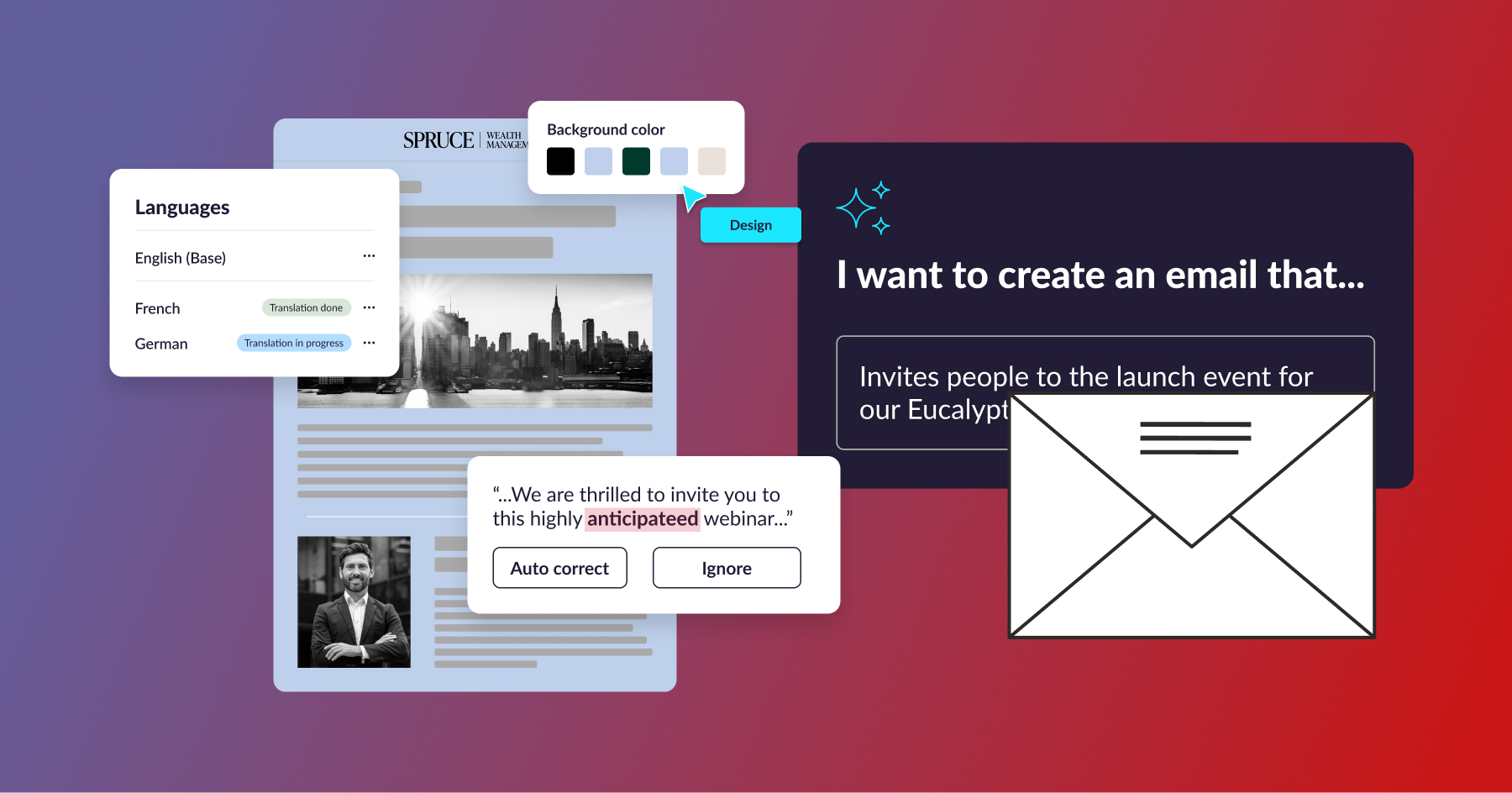If your marketing creation process needs more babysitters than builders, you don’t have a people problem, you have a governance problem. And in an AI-accelerated, highly collaborative world, governance isn’t a red-tape tax. Done right, it’s the unlock for speed, scale, and strategic impact.
What do we mean by “governance-led”?
A Creation Operating Model is the way your org structures how campaigns move from brief to launch—people, process, and tech included. A governance-led model hard-codes the rules (brand, compliance, QA, approvals) into the workflow itself so quality is automatic, not manually policed on every asset. That lets you centralize the rules while decentralizing creation to more contributors safely.
At its core, a governance-led workflow means the rules of your marketing universe aren’t living in someone’s head or a dusty PDF. They’re built right into how work gets done.
Think of it as shifting from “governance by memory” (where you rely on gatekeepers, manual checklists, and review meetings) to “governance by design” where brand standards, compliance requirements, accessibility checks, and legal disclaimers are enforced automatically by the system.
It’s the difference between:
- Manual policing: “Send me the file so I can check if the footer disclaimer is there.”
- Embedded rules: The template won’t publish without the correct footer.
When governance is part of the workflow itself, you get two powerful benefits:
- Centralized control over the rules
Brand, compliance, and QA requirements are set once at the organizational level then every asset, no matter who creates it, adheres to them by default.
- Decentralized, faster execution
Field marketers, partner teams, or non-technical contributors can safely create and launch campaigns without waiting on specialists or gatekeepers.
Instead of slowing you down, governance becomes the reason you can move faster, with more people creating more work safely.
Why governance is the move now (not next quarter)
AI is here and risky without guardrails. Most marketing teams are experimenting with GenAI, but many aren’t realizing benefits because the work still runs through human “governance bottlenecks.”
Embedding rules in the workflow turns AI’s raw speed into safe speed. And yes, your operating model needs to be rebuilt with AI-native capabilities and governance at the core.
Compliance isn’t optional and it doesn’t have to be painful. Automated guardrails mean fewer last-minute “stop the launch” moments.
Collaboration without rules equals chaos. A governance-led model lets multiple contributors work in parallel without creating a QA nightmare at the end. When reviewers, designers, marketers, and compliance work in one governed flow, simultaneously, work accelerates and quality goes up.
Compliance shouldn’t be a speed bump or a crash. Outdated models turn compliance into a costly bottleneck. A governance-led approach reduces rework and risk while keeping launches on schedule.
Control the process; deliver the outcome. Treat your operating model as a strategic lever, not background plumbing. When you build governance into the creation workflow, you get faster launches and more time for high-value work.

What “good governance” looks like in practice
“Good governance” takes many forms. At Stensul, we believe it should be built right into the workflow you adopt. So here’s how we do it:
- Central rules, local execution: Brand, legal, and accessibility rules are encoded once, then applied everywhere via reusable modules and templates. Business units and regions move independently—without going off-brand.
- Role-based permissions: People see and do exactly what they should: marketers assemble; designers design; approvers approve. No more “who changed that?” archeology.
- Automated QA and approvals: Checks for links, images, dark mode, and required disclosures run by default. Approvals happen where the work happens. Launch dates stop slipping.
- Integrated, not isolated: Your creation platform plugs into ESPs/MAPs, DAM, and work management—so you remove handoffs instead of adding yet another island tool.
- Operational insight you can act on: See where work stalls, who’s overloaded, and which steps add zero value. Then fix the model, not just the symptoms.
A quick self-diagnostic for marketers
If any of these sound familiar, your model isn’t governance-led (yet):
- Review cycles depend on a few “policy sheriffs.”
- Designers export pretty files that someone else has to code.
- Marketers wrestle templates in ESPs/MAPs and hope QA catches the fallout.
- Legal review = “email me the latest version?”
- Campaign timelines measured in weeks, not days.
Changes when you lead with governance
So, you’ve identified that you’re lacking a guardrail-centric workflow, now what? Why bother changing your teams’ ways? Well, a few reasons. We’ve worked with hundreds of teams so we know exactly what you can expect with a governance-led workflow.
- Speed (without drama): Teams that bake rules into the workflow cut creation time dramatically freeing ops to focus on scale, not ticket triage. Real-world outcomes include 30× faster creation and 4.5× higher performance; another enterprise saw 90% faster creation with major gains in qualified leads and revenue.
- Scale with confidence: You empower more creators—regional marketers, partner teams, even non-technical users—without sacrificing brand or compliance.
- Fewer costly compliance stalls: Governance shifts compliance from after-the-fact review to always-on guardrails, shrinking review cycles and rework.
- Better collaboration (for real): Work happens in one place, in parallel, with visibility for all stakeholders—so you stop doing version control cosplay.
“Okay, so how do we start?” Use SPEED.
Treat your operating model like a product and run the SPEED Framework:

Scan your current flow → Pinpoint the bottlenecks → Evaluate the economic impact → Expose opportunities for AI → Define guardrails & governance to lock in the gains. Then iterate.
If you read one thing next:
- The cost of compliance bottlenecks (how governance pays for itself).
- Reinventing campaign creation in the age of AI (why operating models must evolve).
- What is your marketing team’s Creation Operating Model? (learn the three common models and why they’re flawed).
- Bring teams together to create better emails faster (collaboration with guardrails).


